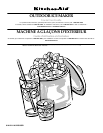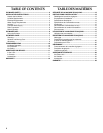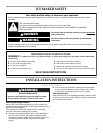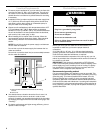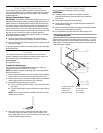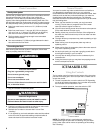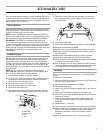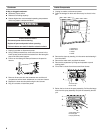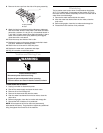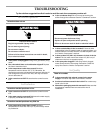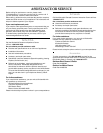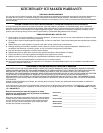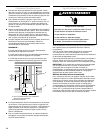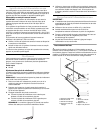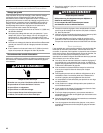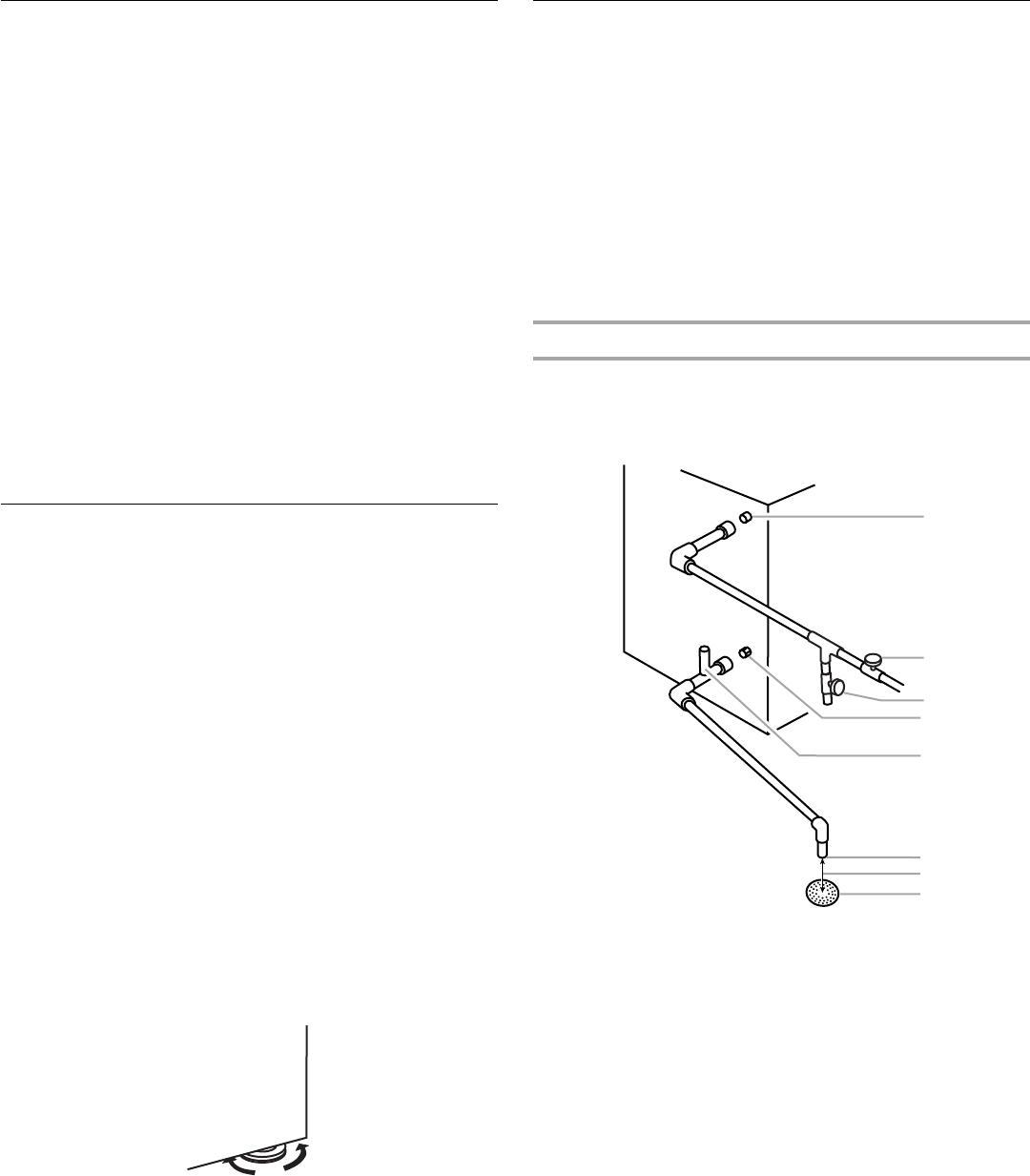
5
Water Supply Requirements
A cold water supply with water pressure of between 30 and
120 psi (207 and 827 kPa) is required to operate the ice maker. If
you have questions about your water pressure, call a licensed,
qualified plumber.
Reverse Osmosis Water Supply
IMPORTANT: The pressure of the water supply coming out of a
reverse osmosis system going to the water inlet valve of the ice
maker needs to be between 30 and 120 psi (207 and 827 kPa).
If a reverse osmosis water filtration system is connected to your
cold water supply, the water pressure to the reverse osmosis
system needs to be a minimum of 40 to 60 psi (276 to 414 kPa).
The reverse osmosis system must provide 1 gal. (3.79 L) of water
per hour to the ice maker for proper ice maker operation.
If the water pressure to the reverse osmosis system is less than
40 to 60 psi (276 to 414 kPa):
■ Check to see whether the sediment filter in the reverse
osmosis system is blocked. Replace the filter if necessary.
■ Allow the storage tank on the reverse osmosis system to refill
after heavy usage.
If you have questions about your water pressure, call a licensed,
qualified plumber.
Leveling
It is important for the ice maker to be level in order to work
properly. Depending upon where you install the ice maker, you
may need to make several adjustments to level it.
Tools required
■ Carpenter’s level
To adjust the leveling legs
Your ice maker has four adjustable leveling legs to help you
steady the product and make sure it is level.
NOTE: It is easier to adjust the leveling legs if you have another
person to assist you.
1. Place a carpenter’s level on top of the product to see whether
the ice maker is level from front to back and side to side.
2. Push up on the top front of the ice maker, and then locate the
leveling legs that are on the bottom of the product.
3. Change the height of the legs as follows:
■ Turn the leveling legs to the right to lower that side of the
ice maker.
■ Turn the leveling legs to the left to raise that side of the ice
maker.
NOTE: The ice maker should not wobble. Use shims to add
stability when needed.
4. Use a carpenter's level to make sure the ice make is level
from front to back and side to side. If the ice maker is not
level, repeat steps 2 and 3. If the ice maker is level, go to the
“Connect Water Supply” section.
Connect Water Supply
Read all directions thoroughly before you begin.
IMPORTANT:
■ Plumbing shall be installed in accordance with the
International Plumbing Code and any local codes and
ordinances.
■ Use copper tubing and check for leaks.
■ Install copper tubing only in areas where temperatures will
remain above freezing.
■ Close the shutoff valve when the water temperature is below
freezing to avoid damage to the tubing.
■ Do not operate ice maker when the water supply is off.
Connecting the water
Connect the ice maker to the water supply using the ¹⁄₂" (1.3 cm)
water inlet on the rear of the ice maker. Be sure to use a potable
water supply. The water supply line must have a shutoff valve and
a bin drain outlet installed.
A. Water supply inlet
B. Shutoff valve
C. Drain valve
D.Bin drain outlet
E.Vent
F. Drain tube outlet
G.2" Air gap
H. Floor Drain
A
D
F
G
H
E
B
C



